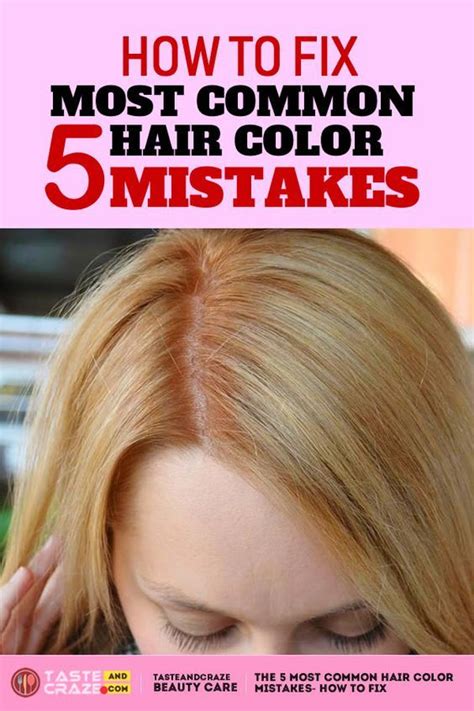Tired of dull, lifeless hair color? Synthetic hair dyes offer vibrant, long-lasting results that can transform your look. Here are 5 genius tips to maximize your hair dyeing experience and achieve salon-quality results at home:

1. Choose the Right Shade for Your Skin Tone
Selecting the perfect hair dye shade is crucial. Consider your skin tone and undertones to find a color that complements your natural features.
- Warm skin tones: Golden, peachy, or yellowish undertones pair well with warm colors like caramel, honey, or auburn.
- Cool skin tones: Pink, rosy, or bluish undertones suit cool colors like platinum, ash blonde, or dark chocolate.
- Neutral skin tones: Have a mix of both warm and cool undertones, allowing you to experiment with a wider range of shades.
2. Test the Dye on a Strand Before Full Application
Before committing to a full head of color, always perform a strand test. This allows you to check the color’s suitability and avoid unpleasant surprises.
- Section off a small piece of hair from an inconspicuous area, such as the back of the neck.
- Apply the dye according to the instructions and let it process.
- Rinse and dry the strand to observe the results.
3. Use a Mixing Ratio Scale
Synthetic hair dyes often require mixing with a developer to achieve the desired color and coverage. Using a mixing ratio scale ensures accurate dilution and prevents color inconsistencies.
- Follow the manufacturer’s instructions carefully to determine the correct ratio.
- Use a scale to measure both the dye and developer precisely.
- Mix thoroughly until a smooth, even consistency is obtained.
4. Apply Evenly to Ensure Consistent Coverage
Achieving even color distribution requires careful application. Use a brush or comb to apply the dye from roots to tips, starting with the most difficult areas to cover.
- Divide hair into sections and apply the dye systematically to avoid missing any spots.
- Comb through the hair to distribute the color evenly and prevent streaks.
- Use gloves to protect your hands and prevent staining.
5. Follow the Processing Time Precisely
The processing time determines the intensity and longevity of the hair color. Follow the manufacturer’s instructions to avoid over- or under-processing.
- Set a timer to ensure accurate processing.
- Monitor the hair’s condition during processing and rinse immediately if any adverse reactions occur.
- Ignoring Allergic Reactions: Always perform a patch test 24 hours before use to check for allergies.
- Overlapping Applications: Avoid applying synthetic hair dyes to previously treated areas, as this can lead to color buildup and damage.
- Exceeding Processing Time: Over-processing can damage hair and result in uneven color.
- Using the Wrong Developer: Using a developer that is too strong or too weak will affect the color outcome.
- Washing Hair Too Soon: Wait at least 24 hours after dyeing to wash your hair to allow the color to fully develop.
Synthetic hair dyes offer several advantages over natural hair dyes:
- Vibrant Colors: Synthetic dyes create brighter, more intense hues that are not achievable with natural dyes.
- Long-Lasting Results: The molecules in synthetic dyes bind more tightly to hair fibers, resulting in longer-lasting color.
- Wide Color Range: Synthetic dyes offer a vast spectrum of colors, making it easy to find the perfect shade to complement any skin tone or desired look.
Beyond enhancing aesthetics, synthetic hair dyes also provide numerous benefits:
- Boost Confidence: A vibrant new hair color can boost confidence and self-esteem.
- Experiment with Trends: Synthetic dyes allow you to easily embrace the latest hair color trends without committing to a permanent change.
- Cover Gray Hair: Synthetic dyes effectively cover gray hair, giving a youthful and refreshed appearance.
- Damage Repair: Some synthetic dyes contain conditioning agents that help restore damaged hair and improve its overall health.
Synthetic Hair Dyes
- Pros: Vibrant colors, long-lasting results, wide color range, affordable.
- Cons: May contain harsh chemicals, can damage hair if not used correctly.
Natural Hair Dyes
- Pros: Gentle on hair, often derived from plant-based ingredients, eco-friendly.
- Cons: Limited color range, shorter-lasting results, may not fully cover gray hair.
| Type | Description |
|---|---|
| Permanent Dyes: Lasts for several weeks, penetrates hair cuticles, and alters the hair’s natural pigment. | |
| Semi-Permanent Dyes: Lasts for 6-8 washes, gradually fades over time, does not alter the hair’s natural pigment. | |
| Temporary Dyes: Washes out in a single wash, does not alter the hair’s natural pigment, ideal for quick color changes. |
| Skin Tone | Warm Colors | Cool Colors |
|---|---|---|
| Warm: Golden, peachy, yellow undertones | Caramel, honey, auburn | |
| Cool: Pink, rosy, blue undertones | Platinum, ash blonde, dark chocolate | |
| Neutral: Both warm and cool undertones | Wide range of shades |
| Mistake | Consequences |
|---|---|
| Ignoring Allergic Reactions: Severe allergic reactions, skin irritation, swelling. | |
| Overlapping Applications: Color buildup, uneven color, hair damage. | |
| Exceeding Processing Time: Hair damage, uneven color, potential breakage. | |
| Using the Wrong Developer: Incorrect color outcome, slow or fast processing, irregular color distribution. | |
| Washing Hair Too Soon: Pigment washes out prematurely, resulting in shorter-lived color. |
| Benefit | Explanation |
|---|---|
| Boost Confidence: A new hair color can enhance self-esteem and project a positive image. | |
| Experiment with Trends: Easily embrace the latest hair color trends without committing to a permanent change. | |
| Cover Gray Hair: Effectively conceal gray hair, giving a youthful and refreshed appearance. | |
| Damage Repair: Some synthetic dyes contain conditioning agents that help restore damaged hair and improve its overall health. |
